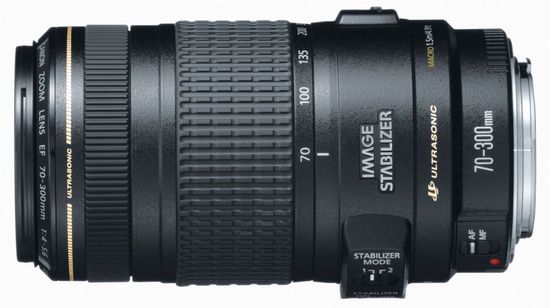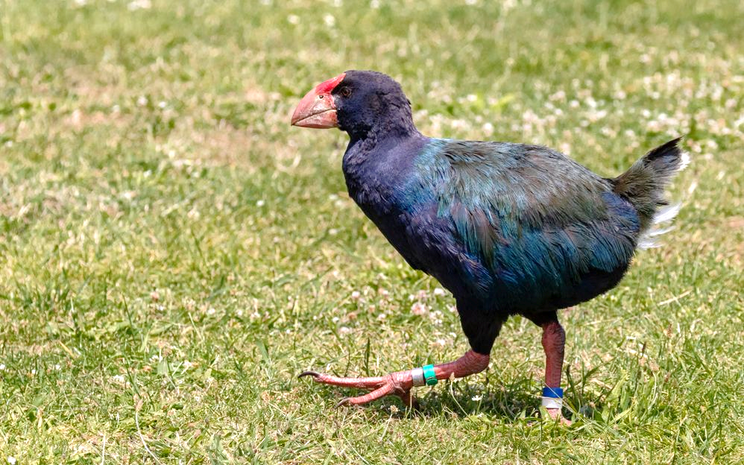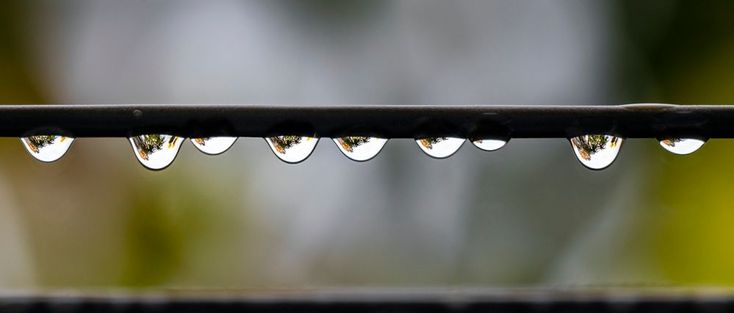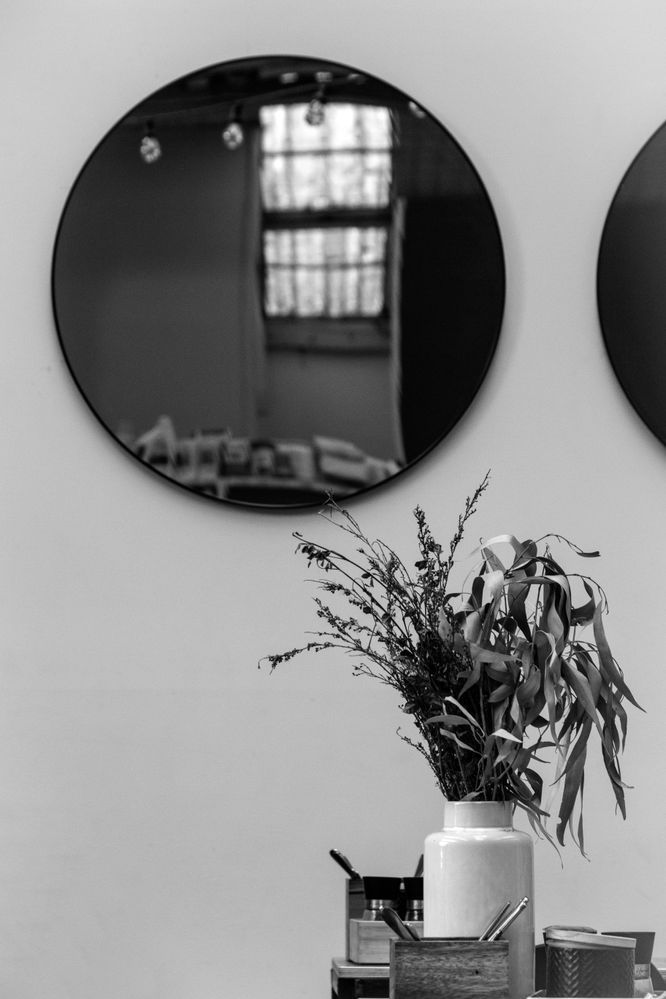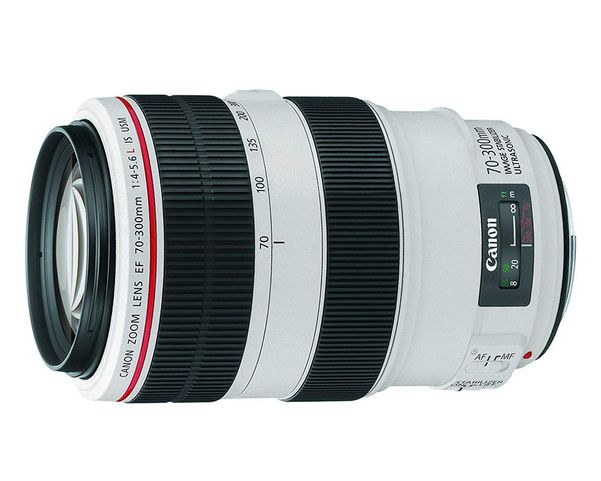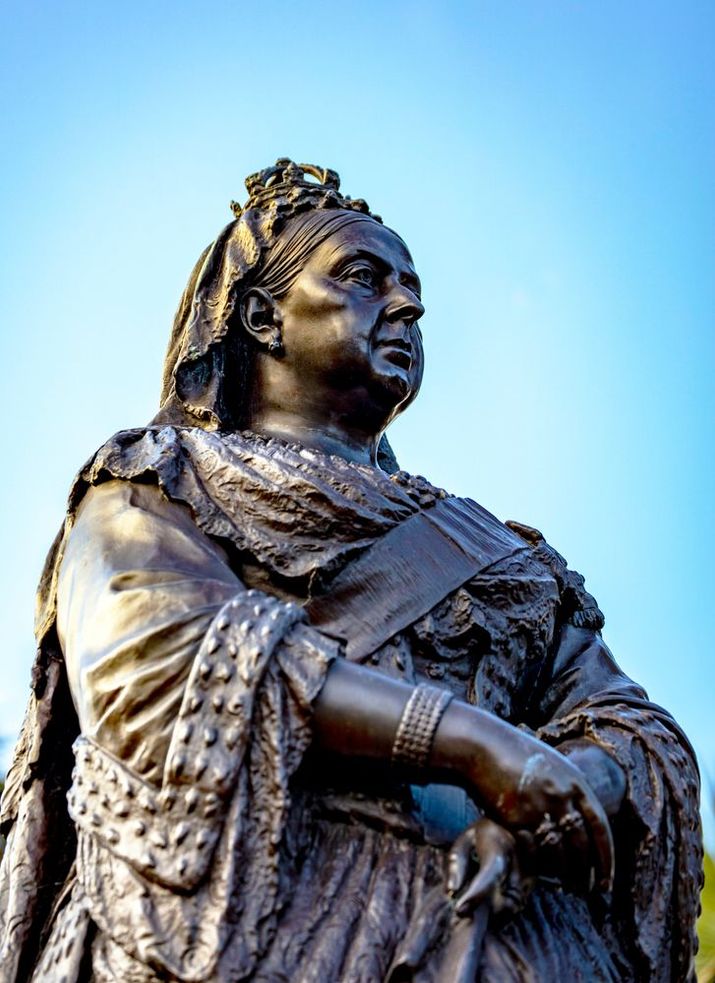- Canon Community
- Discussions & Help
- Camera
- EF & RF Lenses
- Re: Non-L 70-300 Canon Lenses
- Subscribe to RSS Feed
- Mark Topic as New
- Mark Topic as Read
- Float this Topic for Current User
- Bookmark
- Subscribe
- Mute
- Printer Friendly Page
70-300 Canon Lenses In-Depth Analysis
- Mark as New
- Bookmark
- Subscribe
- Mute
- Subscribe to RSS Feed
- Permalink
- Report Inappropriate Content
12-22-2018 01:39 PM - edited 10-17-2024 03:08 PM
Introduction
Canon has made some excellent kit lenses - the EF-S 18-55 STM, EF-S18-135 STM and nano USM, and the EF-S 55-250 STM are standout examples. The gold standard for Canon zoom lenses has been measured against the Luxury L lenses. Among the most outstanding have been the Canon EF 70-200 f/2.8 L IS USM MkII or III, the f/4 L MkII (super light), and the EF 100-400 L MkII super telephoto zoom.
However, for many people who have purchased a camera with a kit lens, and who wish to extend the focal range, the L lenses are not a viable economic option. So, this article explores what is available as an upgrade from those lenses for someone wanting a longer reach with great image quality and without breaking the bank.
A note on Terminology:
L designation for Canon Luxury (read professional-grade) lenses. These are expensive, but highly robust, built to be environmentally sealed to resist dust and moisture, and with top-end optics. They are seriously expensive, but built to perform and last over long periods of serious use. They are designed primarily for full-frame cameras, but can be uses on crop sensor bodies.
EF lenses are designed for Canon's Full Frame (FF) DSLRs (1D, 5D and 6D cameras), but will fit and work on crop sensor bodies as well. They will work on M-series and R-series of bodies with an appropriate adapter.
EF-S lenses are exclusive to crop sensor APS-C bodies and will not work on FF DSLR cameras, but will work on M-series and some R-Series bodies with appropriate adapters. They are cheaper than EF lenses but not necessarily inferior, some are of high optical quality.
RF and RF-S lenses are designed for the new Canon R-series Mirrorless Interchangeable Lens Cameras (MILCs) and do not work with the EF and EF-S or EF-M mounts. EF and EF-S lenses can work with the RF mount via an adapter.
EF-M lenses are designed for Canon's early M-series MILCs and are not adaptable to any other mount, but EF and EF-S lenses can be attached to M-series bodies via an adapter. Not RF or RF-S units, however.
IS = Image Stabilization, a means by which the lens can mitigate the impacts of camera movement to allow images not to become blurry, especially at slower shutter speeds. There are two types Optical Image Stabilization (within a lens) and In-Body Image Stabilization (via the camera sensor). Some systems can combine both.
USM = Ultra-sonic Motor, a means to focus the camera using small motors built into the lens to move a mechanical system to change the focusing of a lens. On some cheaper lenses the AF button on the lens must be turned off to manually focus, or risk damaging the mechanical focusing system. This is used on the MkI and L versions of the EF 70-300 lenses.
STM = Stepping Motor, a direct drive system that does not use mechanics: what is called, fly-by-wire. This allows a lens to be manually focused without turning off the AF-ON button (autofocus on) and is faster than USM.
Nano-USM, is the latest iteration of Canon's motor drive system and is incredibly fast, silent and smooth. It too is fly-by-wire. In this context it is the motor system of the EF 70-300 MkII version (not the L version).
The EF 70-300 f/4-5.6 IS USM, (original) lens.
The Canon EF 70-300mm f/4-5.6 IS USM Lens: a unit released in 2005 that caused some controversy amongst a few users as they apparently had mixed results with it. Those issues related to specifically using the lens in portrait mode, however that was resolved by Canon soon after release when it was made apparent. The lens has good image stabilization, a much stronger construction than kit lenses, including a metal lens mount and is able to work with crop and full-frame bodies.
Personally, I have liked the images taken with it, although compared with the most modern units it had some odd traits, like the slightly audible autofocus and IS, and the way the lens might occasionally not fully retracted at random times during use (easily resolved with a re-focus). Still, it was a valid and significant update from the of EF-S 55-250 IS (for reach), or (for optics and build) to the pretty horrific 75-300 standard kit zooms that have mediocre optics and build, and are unstabilized.
I think the MkI version is still a great performer and it will be much cheaper refurbished or second-hand. If I was limited for funds and wanted to upgrade from either of those lenses today, I would still seriously consider this lens.
The following three images were taken on the EF 70-300mm f/4-5.6 IS USM MkI: all hand-held.
Canon EOS 60D: 300mm, f/9, 1/400sec, ISO-500.
A Takahe Adult Canon EOS 80D, 189mm, f/7.1, 1/250 sec, ISO-400
Canon EOS 650D, 75mm, f/9, 1/250 sec, ISO-200 (hand-held and severely cropped)
Reviews:
Canon EF 70-300mm f/4.0-5.6 IS USM Lens Review - YouTube
The EF 70-300 f/4-5.6 IS USM, MkII lens.
In 2017 Canon released the EF 70-300 F4.0-5.6 IS USM MkII version.
It has had a major cosmetic upgrade. Gone the busy and lumpy control layout and in with a sleek smooth matt plastic shape that is bigger in diameter than the MkI - the old unit had a 58mm filter ring while the new one is at 67mm. The weight has been kept under control: 710g from 630g is not too bad considering the changes "under the hood".
The buttons are now recessed more, and it now sports an LCD display that offers DoF indicators for the currently selected focal length, or (press a button) the FoV of the lens - which seems superfluous, considering lens focal length is printed on the focusing ring about 1 cm above! For those using an ASP-C body it does give the equivalent FoV values automatically. Finally, after another press it gives you the degree of shake experienced by the lens. Personally, I have little use for any of these so I would tend to leave the display off, but that's my choice.
The body is still not weather sealed but the rear element, located flush with the metal plate at the rear of the lens, is fixed in place, so it may offer some resistance to bellows effect. The lens still extends and retracts like the old one. Operation is smooth and silent.
The autofocus is accurate and blazingly fast thanks to the Nano USM motor that combines best of STM and ring-type USM - I can see this appearing in more lenses. I did not find it was hunting as the MkI did on a few occasions. This is an amazing performer in that area.
IS offers 4 stops compared to the claimed 3 of the MkI and it seems to hold onto that. Which is just as well as my research and own experience indicates that the variable aperture of this lens loses its wider capacity faster as one increases the focal length than the earlier model. From what I have read this is seen as a result of the more complex optical construct of the lens.
Being almost silent it is likely a much more suitable candidate for video, or for quiet stills shooting than the previous one. Still if you don't do video (as I don't) that is less of an issue unless you are concerned about disturbing your subjects - say at a wedding...
In terms of distortion, vignetting etc. I found both the lenses performed reasonably well in both areas - the focal range of tele-zoom is much less challenging than one going from wide to tele, such as the 24-105 or the 18-135. I had no difficulty in letting the PP software do its magic to make the appropriate corrections.
Performance on FF vs APS-C. This was interesting to me... I tried both the units on a canon 650D (T4i Rebel), a 60D, 80D, 7DII and 5DIII. I found the units seemed to render similarly excellent results, especially considering they are two crop and a FF body respectively. I still got good results with the Rebel. I will hazard no inference here simply report my own experience and perception.
A variety of photos taken with the Mk II lens: all were hand-held, using available light.

Canon 7DMkII, EF-70-300 f4-5.6 II USM @ 189mm, f/8, 1/1000sec, ISO-200
Canon EOS 5DmkIII, EF 70-300 f/4-5.6, IS USM MkII, 135mm, f/8, 1/80sec, ISO-100
Canon EOS 5DmkIII, EF 70-300 f/4-5.6, IS USM MkII, 187mm, f/8, 1/250sec, ISO-1000
Canon EOS 80D, EF 70-300 f/4-5.6 IS USM MkII, 300mm, f/10, 1/15 sec, ISO-200
(shot through double-glazed window)
Canon EOS 80D, EF 70-300 IS USM MkII, 278mm, f/5.6, 1/250 sec, ISO-100
The subject is about 2.5cm (1”) in diameter
Canon 7DMkII, 135mm, f9, 1/250sec, ISO 800
5DMkIII, 200mm, f9, 1/500sec, ISO 200
One of the great tests of a lens is to see how much you can crop one of its images and still get something decent, especially given the very low light environment in which I was shooting, hand-held.
I took the EF 70-300MkII out to the Tiritiri Open Sanctuary and along the way took this shot:
Gory details: Canon 80D, 300mm, f8, 1/50 sec, ISO 1600
So after a bit of cropping, I got this:
For second opinions on the EF 70-300 IS USM MkII lens see these links to reviews by Justin Abbott:
Canon EOS Lens - Introducing the EF 70 300mm f4 5 6 IS II USM - YouTube Rudy Winston, Canon Technical expert
RESOLUTION and FINAL VERDICT and Canon EF 70-300 IS II USM | Sharp or Not? - YouTube
Neither of these units should be compared to the fabulous Canon EF 70-300mm f/4-5.6L IS USM.
Canon EF 70-300mm f/4-5.6L IS USM
The top-of-the-line lens in this range is the L version: relatively light, small form factor, incredibly sharp and responsive, and with beautiful, rich tones - but about 3 times the price of the new EF 70-300 F4.0-5.6 IS II USM, so I see these as aimed at completely different markets, and one has to consider that when judging them.
This lens is older than the MkII non-L version, but this lens is best for the professional who needs reliability, robustness, and outstanding consistent performance. See the following video:
Some sample shots from EF 70-300L the lens, all hand-held.
Canon EOS 60D, 76mm, f/8, 1/160 sec, ISO-200
EOS 7DMkI, 182mm, f/6.3, 1/100 sec, ISO 320
Canon EOS 7DMkII, 140mm, f/9, 1/160 sec, ISO-320
The following two image were taken, again hand-held, on the totally unforgiving Canon EOS 5DsR, a 51MP monster that cancels out the Anti-Aliasing Filter to offer stunning detail, but will show any lens or technique flaws. The images have had to be massively downsized to publish. The second is a 100% crop of the first image.
Canon EOS 5DsR, Canon EF-L 70-300 f/4-5.6 IS USM @150mm, f/5, 1/200 sec, ISO-200
The following shot was taken with the lens adapted via the Canon EF-RF adapter to the Canon EOS R6, and it has performed equally well on the more demanding R5.
Reviews of the 70-300L version:
Canon EF 70-300mm f/4-5.6L IS USM Long Term Review - YouTube after 5 years of use.
Conclusion:
Being an EF rather than EF-S lens, any of the versions of the EF 70-300 F4.0-5.6 is worth considering as a great upgrade lens for those leaving the standard kits lenses, or those who need the extra reach of the 70-300mm rather than one of the 70-200 EF L models. They offer excellent value for money at different price points, but all are great investments.
cheers, TREVOR
The mark of good photographer is less what they hold in their hand, it's more what they hold in their head;
"All the variety, all the charm, all the beauty of life is made up of light and shadow", Leo Tolstoy;
"Skill in photography is acquired by practice and not by purchase" Percy W. Harris
- Mark as New
- Bookmark
- Subscribe
- Mute
- Subscribe to RSS Feed
- Permalink
- Report Inappropriate Content
01-26-2019 06:24 PM
@Tronhard wrote:
@ebiggs1 wrote:"Gory details: Canon 80D, 300mm, f8, 1/50 sec, ISO 1600'
...and you consider this a success or failure?
Such things are in the eye of the beholder... But given the photo was taken hand-held in dim light (they are forest birds), the slow shutter speed and the small size of the original, I think the lens performed well.
What do YOU think?
FWIW, I think you're right. Given that the shot was hand held, I don't see how it could have been improved.
Philadelphia, Pennsylvania USA
- Mark as New
- Bookmark
- Subscribe
- Mute
- Subscribe to RSS Feed
- Permalink
- Report Inappropriate Content
01-26-2019 06:33 PM
Like many zooms I felt the sweet spot was in the f5.6 - f8 region and since the birds flit around VERY repidly I kept the DoF as deep as I dared. I like the 80D body for this lens, with the battery grip on (as with all my Canon DSLR bodies) it had a nice balance. Not to say that it doesn't balance well on the 5D III and IV bodies, but they are a bit heavier.
cheers, TREVOR
The mark of good photographer is less what they hold in their hand, it's more what they hold in their head;
"All the variety, all the charm, all the beauty of life is made up of light and shadow", Leo Tolstoy;
"Skill in photography is acquired by practice and not by purchase" Percy W. Harris
- Mark as New
- Bookmark
- Subscribe
- Mute
- Subscribe to RSS Feed
- Permalink
- Report Inappropriate Content
01-27-2019 03:58 AM
And one more, a Bell Bird or Korimako, taken under the same conditions
cheers, TREVOR
The mark of good photographer is less what they hold in their hand, it's more what they hold in their head;
"All the variety, all the charm, all the beauty of life is made up of light and shadow", Leo Tolstoy;
"Skill in photography is acquired by practice and not by purchase" Percy W. Harris
- Mark as New
- Bookmark
- Subscribe
- Mute
- Subscribe to RSS Feed
- Permalink
- Report Inappropriate Content
01-27-2019 11:38 AM
"What do YOU think?  "
"
Given the conditions I think it shows your talent more than it shows the lens ability. When a photograph needs qualifiers is it truly a good shot? The fact is, if you are good with it, so am I. All in for you.
EOS 1D, EOS 1D MK IIn, EOS 1D MK III, EOS 1Ds MK III, EOS 1D MK IV and EOS 1DX and many lenses.
- Mark as New
- Bookmark
- Subscribe
- Mute
- Subscribe to RSS Feed
- Permalink
- Report Inappropriate Content
01-27-2019 05:43 PM - edited 07-06-2020 02:40 PM
@ebiggs1 wrote:"What do YOU think?
"
Given the conditions I think it shows your talent more than it shows the lens ability. When a photograph needs qualifiers is it truly a good shot? The fact is, if you are good with it, so am I. All in for you.
Aw shucks... now I'm all red and blushing! ![]()
Thank you for the kind complement. PERSONALLY I like to know the context of an image when I consider its merit - why, perhaps where, certainly the constraints. In this case I was challenged by very low light and I felt the conditions would challenge the camera, the lens and me. I was right, the little dears flitted around like rockets and I took a lot of images before I managed to get one in shot - not an untypical situation in bird photography. Still, considering the lens, I was impressed by the image stabilization, the blazing fast focus and the fact it didn't weigh anything like as much as my much-loved 100-400 lens. Sharpness is pretty good too I thought.
cheers, TREVOR
The mark of good photographer is less what they hold in their hand, it's more what they hold in their head;
"All the variety, all the charm, all the beauty of life is made up of light and shadow", Leo Tolstoy;
"Skill in photography is acquired by practice and not by purchase" Percy W. Harris
- Mark as New
- Bookmark
- Subscribe
- Mute
- Subscribe to RSS Feed
- Permalink
- Report Inappropriate Content
01-27-2019 05:59 PM
"...challenge the camera, the lens and me."
I think that totally proves my critique. Great photos whether in a challenging place or not are not done by the gear. It is the person using it that makes the shot. I would be willing to bet you a large sum of money that if you put the very same gear out there and left it alone for as long as you want, it still would not have gotten that shot. Mine doesn't anyway.
I used to tell my classes great photos are 1/2 camera/lens, 1/2 post editing and 1/2 you. Not necessarily in that order. Yeah beginners don't understand it but as you progress it starts to make sense. Sometimes the major effort is not where you expect to find it and sometimes, just sometimes, you need just that little more effort (hence the three 1/2 sections).
EOS 1D, EOS 1D MK IIn, EOS 1D MK III, EOS 1Ds MK III, EOS 1D MK IV and EOS 1DX and many lenses.
- Mark as New
- Bookmark
- Subscribe
- Mute
- Subscribe to RSS Feed
- Permalink
- Report Inappropriate Content
01-31-2019 02:31 PM - edited 01-31-2019 05:17 PM
One the other hand...
I took the Mark I version of the 70-300 lens to the same island and these are a couple of images that I got from that experience. I was using a Canon 5DMkIII, and the shots were hand-held again.
California Grouse: 300mm, f8, 1/30sec, ISO-200
Hihi or Stitch Bird: 300mm, f5.6, 1/80sec, ISO-800
cheers, TREVOR
The mark of good photographer is less what they hold in their hand, it's more what they hold in their head;
"All the variety, all the charm, all the beauty of life is made up of light and shadow", Leo Tolstoy;
"Skill in photography is acquired by practice and not by purchase" Percy W. Harris
- Mark as New
- Bookmark
- Subscribe
- Mute
- Subscribe to RSS Feed
- Permalink
- Report Inappropriate Content
01-31-2019 05:13 PM
Nice......................again ![]()
EOS 1D, EOS 1D MK IIn, EOS 1D MK III, EOS 1Ds MK III, EOS 1D MK IV and EOS 1DX and many lenses.
- Mark as New
- Bookmark
- Subscribe
- Mute
- Subscribe to RSS Feed
- Permalink
- Report Inappropriate Content
02-25-2019 04:42 PM
@Tronhard wrote:One the other hand...
I took the Mark I version of the 70-300 lens to the same island and these are a couple of images that I got from that experience. I was using a Canon 5DMkIII, and the shots were hand-held again.
[one shot omitted]
Hihi or Stitch Bird: 300mm, f5.6, 1/80sec, ISO-800
That poor bird has to wear four bands? I suppose that's what he gets for hanging around the feeders.
Philadelphia, Pennsylvania USA
- Mark as New
- Bookmark
- Subscribe
- Mute
- Subscribe to RSS Feed
- Permalink
- Report Inappropriate Content
03-03-2019 06:39 PM
@RobertTheFat wrote:
@Tronhard wrote:One the other hand...
I took the Mark I version of the 70-300 lens to the same island and these are a couple of images that I got from that experience. I was using a Canon 5DMkIII, and the shots were hand-held again.
That poor bird has to wear four bands? I suppose that's what he gets for hanging around the feeders.
I am glad they were put on symmetrically - at least it will feel balanced! ![]()
cheers, TREVOR
The mark of good photographer is less what they hold in their hand, it's more what they hold in their head;
"All the variety, all the charm, all the beauty of life is made up of light and shadow", Leo Tolstoy;
"Skill in photography is acquired by practice and not by purchase" Percy W. Harris
01/14/2025: Steps to resolve still image problem when using certain SanDisk SD cards with the Canon EOS R5 Mark II
12/18/2024: New firmware updates are available.
EOS C300 Mark III - Version 1..0.9.1
EOS C500 Mark II - Version 1.1.3.1
12/13/2024: EOS Webcam Utility Pro V2.3b is now available to support Windows on ARM PC users.
12/05/2024: New firmware updates are available.
EOS R5 Mark II - Version 1.0.2
11/14/2024: Windows V 2.3a installer for EOS Webcam Utility Pro is available for download
11/12/2024: EOS Webcam Utility Pro - Version 2.3 is available
09/26/2024: New firmware updates are available.
EOS R6 Mark II - Version 1.5.0
08/09/2024: Firmware update available for RC-IP1000 - Version 1.1.1
08/08/2024: Firmware update available for MS-500 - Version 2.0.0
- EOS Rebel T5 Need help with screen mirroring to a MACBOOK in EOS DSLR & Mirrorless Cameras
- EOS 5D Mark lll internal temperature too high error message in EOS DSLR & Mirrorless Cameras
- Advice for EOS R8 in EOS DSLR & Mirrorless Cameras
- Canon E6 Mark II - set and KEEP center focus? in EOS DSLR & Mirrorless Cameras
- TETHERING CANON R50 in EOS DSLR & Mirrorless Cameras
Canon U.S.A Inc. All Rights Reserved. Reproduction in whole or part without permission is prohibited.
